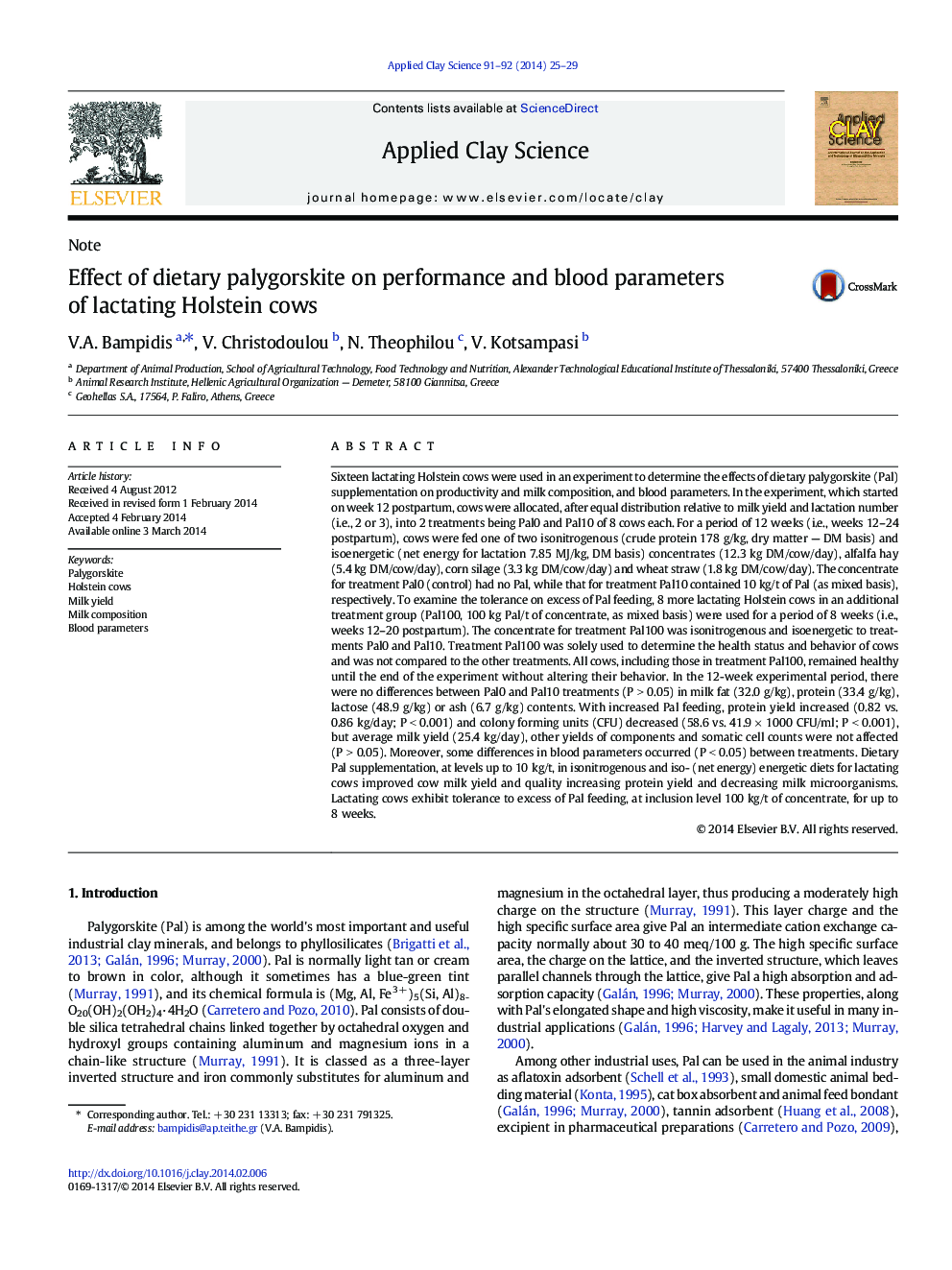| کد مقاله | کد نشریه | سال انتشار | مقاله انگلیسی | نسخه تمام متن |
|---|---|---|---|---|
| 1694695 | 1519084 | 2014 | 5 صفحه PDF | دانلود رایگان |
• Palygorskite was studied as a feed supplement for lactating cows.
• Milk yield and quality, and blood parameters, of cows were monitored.
• Palygorskite increased protein yield and decreased bacteria in milk.
• Lactating cows exhibit tolerance to excess of palygorskite feeding.
Sixteen lactating Holstein cows were used in an experiment to determine the effects of dietary palygorskite (Pal) supplementation on productivity and milk composition, and blood parameters. In the experiment, which started on week 12 postpartum, cows were allocated, after equal distribution relative to milk yield and lactation number (i.e., 2 or 3), into 2 treatments being Pal0 and Pal10 of 8 cows each. For a period of 12 weeks (i.e., weeks 12–24 postpartum), cows were fed one of two isonitrogenous (crude protein 178 g/kg, dry matter — DM basis) and isoenergetic (net energy for lactation 7.85 MJ/kg, DM basis) concentrates (12.3 kg DM/cow/day), alfalfa hay (5.4 kg DM/cow/day), corn silage (3.3 kg DM/cow/day) and wheat straw (1.8 kg DM/cow/day). The concentrate for treatment Pal0 (control) had no Pal, while that for treatment Pal10 contained 10 kg/t of Pal (as mixed basis), respectively. To examine the tolerance on excess of Pal feeding, 8 more lactating Holstein cows in an additional treatment group (Pal100, 100 kg Pal/t of concentrate, as mixed basis) were used for a period of 8 weeks (i.e., weeks 12–20 postpartum). The concentrate for treatment Pal100 was isonitrogenous and isoenergetic to treatments Pal0 and Pal10. Treatment Pal100 was solely used to determine the health status and behavior of cows and was not compared to the other treatments. All cows, including those in treatment Pal100, remained healthy until the end of the experiment without altering their behavior. In the 12-week experimental period, there were no differences between Pal0 and Pal10 treatments (P > 0.05) in milk fat (32.0 g/kg), protein (33.4 g/kg), lactose (48.9 g/kg) or ash (6.7 g/kg) contents. With increased Pal feeding, protein yield increased (0.82 vs. 0.86 kg/day; P < 0.001) and colony forming units (CFU) decreased (58.6 vs. 41.9 × 1000 CFU/ml; P < 0.001), but average milk yield (25.4 kg/day), other yields of components and somatic cell counts were not affected (P > 0.05). Moreover, some differences in blood parameters occurred (P < 0.05) between treatments. Dietary Pal supplementation, at levels up to 10 kg/t, in isonitrogenous and iso- (net energy) energetic diets for lactating cows improved cow milk yield and quality increasing protein yield and decreasing milk microorganisms. Lactating cows exhibit tolerance to excess of Pal feeding, at inclusion level 100 kg/t of concentrate, for up to 8 weeks.
Journal: Applied Clay Science - Volumes 91–92, April 2014, Pages 25–29
